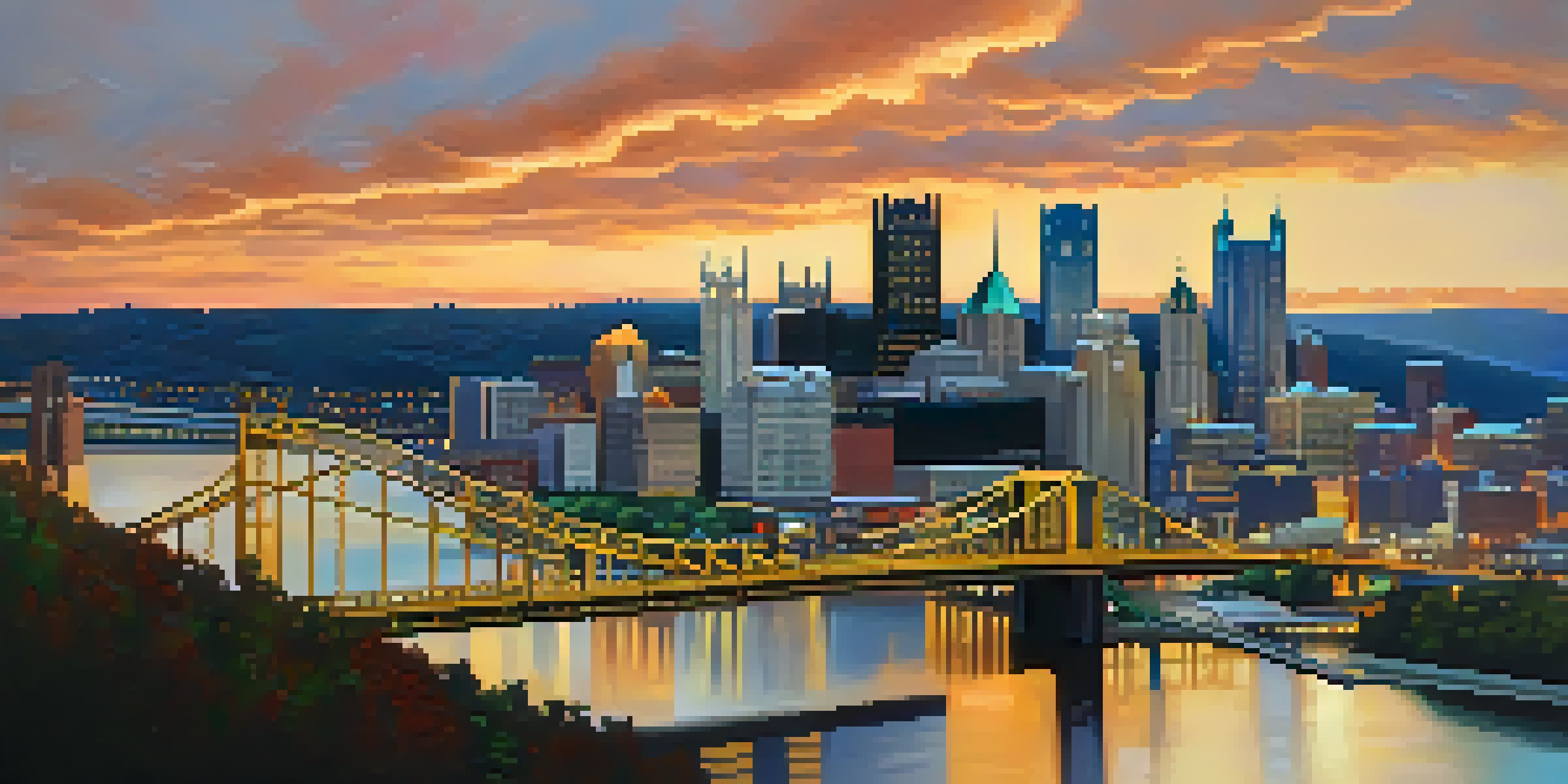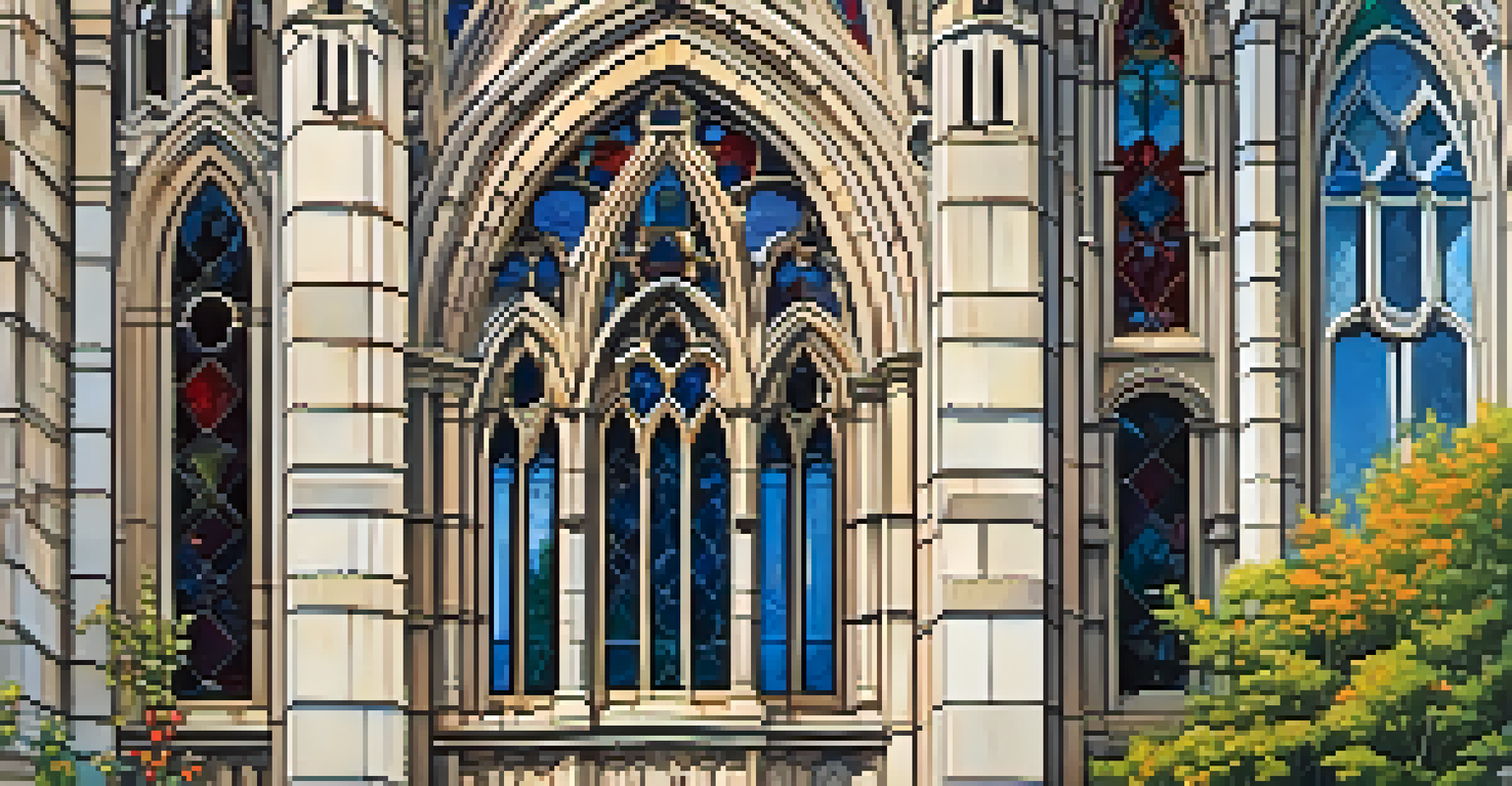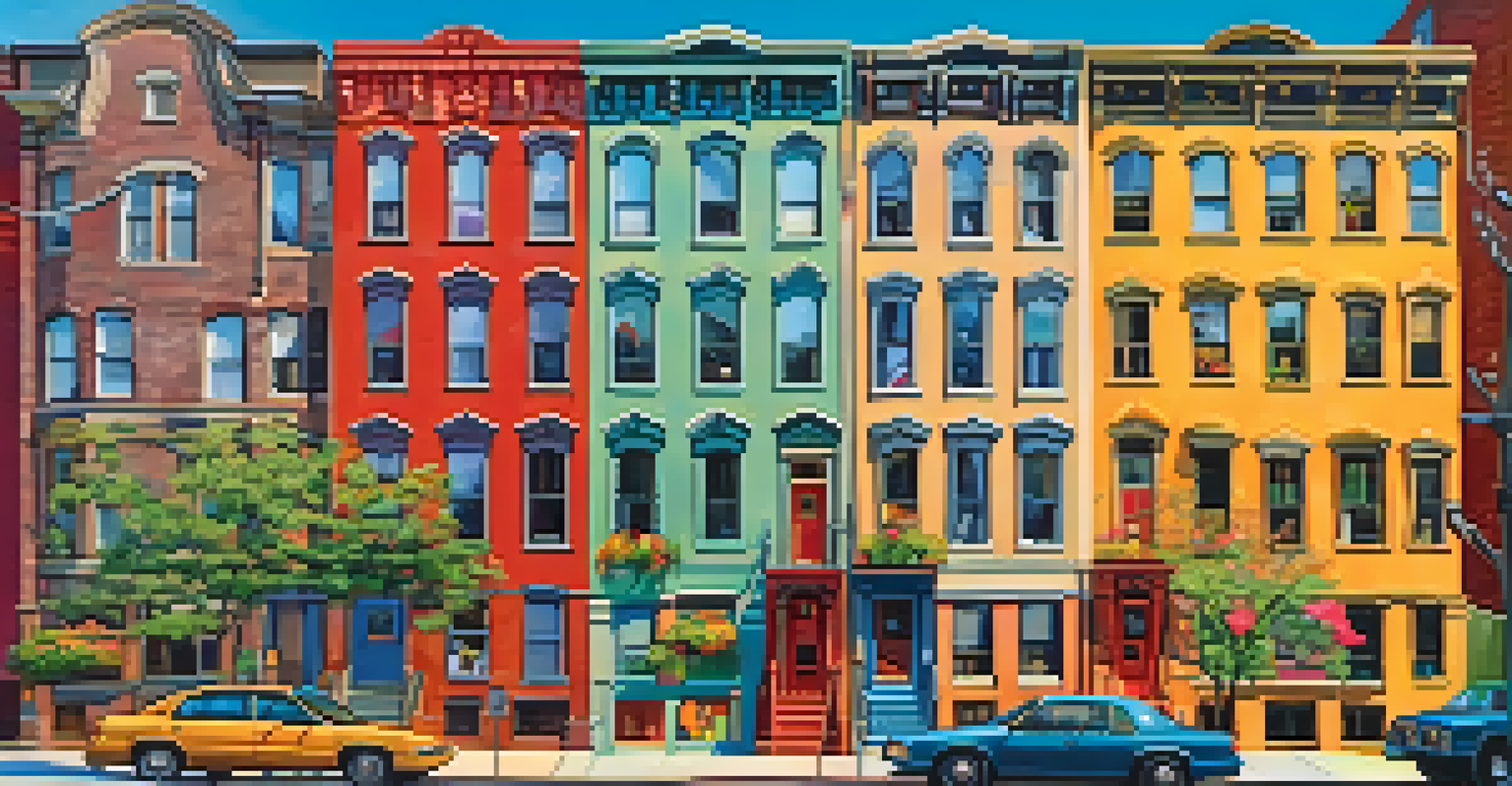Cultural Influences on Pittsburgh's Architectural Evolution

A Brief History of Pittsburgh's Architectural Roots
Pittsburgh's architecture is a tapestry woven from its rich history, beginning with its founding in the 18th century. Early structures, primarily influenced by European settlers, reflect a mix of colonial and industrial designs. As the city grew, so did the need for more diverse architectural styles to accommodate its evolving culture and economy.
Architecture is the will of an epoch translated into space.
The convergence of various immigrant groups brought unique traditions and aesthetics to Pittsburgh's streets. Each wave of settlers contributed their distinct architectural styles, from the sturdy brick buildings of German immigrants to the ornate churches erected by the Irish. This blend of influences created a vibrant cityscape that tells a story of resilience and adaptability.
Recognizing these historical roots is essential to understanding the current architectural landscape. The past is not just a backdrop; it shapes the identity of Pittsburgh today, leading to a city that values both its heritage and its future.
The Role of Industry in Architectural Development
Pittsburgh's identity has long been tied to its industrial roots, particularly in steel production. The demand for functional and durable buildings led to the rise of utilitarian structures during the late 19th and early 20th centuries. Factories, warehouses, and worker housing were designed with practicality in mind, reflecting the city's blue-collar ethos.

As the steel industry boomed, so did the wealth of industrial magnates, leading to the construction of grandiose mansions and public buildings. Iconic structures like the Phipps Conservatory and the Carnegie Museum of Art emerged, showcasing a shift from purely functional design to a blend of artistry and utility. This duality remains a hallmark of Pittsburgh's architectural evolution.
Architectural Diversity from Immigrants
Pittsburgh's architecture showcases a rich blend of styles brought by various immigrant groups, each contributing to the city's unique identity.
Today, the remnants of this industrial past coexist with modern developments, creating a unique architectural dialogue. The city's skyline, dotted with both historical and contemporary structures, reflects its ongoing transformation and the lasting impact of its industrial heritage.
Immigrant Contributions to Architectural Diversity
Pittsburgh is a melting pot of cultures, and this diversity is vividly reflected in its architecture. Immigrants from Italy, Poland, and other countries brought their unique building traditions, enriching the city's architectural palette. From the colorful row houses of the Hill District to the stunning cathedrals in various neighborhoods, these contributions are invaluable.
Preservation is the key to a community's identity and legacy.
For example, the Italian influence is prominent in the construction of ornate churches and vibrant community spaces. Similarly, Polish immigrants introduced the concept of the 'Dome', which can still be seen in many local churches. Each group not only built structures but also fostered a sense of community, making their mark on the city’s identity.
Understanding these immigrant influences allows us to appreciate the rich narrative behind Pittsburgh’s buildings. Each structure stands as a testament to the cultural stories and traditions that have shaped the city over the decades.
The Impact of Modernism and Postmodernism
The mid-20th century ushered in new architectural movements, with modernism challenging traditional styles. In Pittsburgh, this shift was marked by the construction of sleek, minimalist buildings that emphasized function and simplicity. The Kaufmann's department store and the Allegheny County Courthouse exemplify this modernist ethos, featuring clean lines and innovative designs.
Postmodernism soon arrived as a reaction to modernism, introducing a playful and eclectic approach to architecture. In Pittsburgh, this is evident in structures like the PPG Place, which combines glass and steel with a striking Gothic-inspired aesthetic. This shift not only transformed the skyline but also sparked conversations about the role of architecture in cultural expression.
Preservation of Historical Heritage
Efforts to preserve Pittsburgh's architectural heritage highlight the community's commitment to honoring its past while fostering contemporary development.
As we navigate through these architectural movements, it becomes clear that they are not just styles, but reflections of societal changes. Pittsburgh's architectural landscape is a canvas that continues to evolve with each passing era.
Preservation Efforts and Cultural Heritage
As Pittsburgh evolves, preserving its architectural heritage has become a priority for many organizations and community members. Efforts to revitalize historic neighborhoods and maintain older buildings highlight the importance of cultural memory in contemporary society. Structures like the Historic Hill District and the Strip District are prime examples of how preservation can coexist with modern development.
These initiatives often involve collaboration between local governments, nonprofits, and residents, showcasing the community's commitment to its history. By preserving these sites, Pittsburgh honors its past while fostering a sense of pride among its residents. The revitalization also attracts tourism, bringing economic benefits to the city.
Ultimately, preservation is about more than just maintaining old buildings; it’s about safeguarding the stories and experiences that define a community. Pittsburgh's architectural preservation efforts reflect a deep respect for its cultural roots and a desire to share that legacy with future generations.
Public Art and Its Architectural Integration
Public art has become an integral part of Pittsburgh's architectural landscape, enhancing the city’s aesthetic appeal. Murals, sculptures, and installations are thoughtfully integrated into buildings and public spaces, creating a dialogue between art and architecture. This relationship not only beautifies the environment but also encourages community engagement and interaction.
For instance, the iconic 'Mister Rogers' mural in the neighborhood of Friendship reflects the city's cultural heritage while inviting residents and visitors to experience a piece of nostalgia. Such art pieces often tell stories about the community and its values, reinforcing the city's identity.
Future Focus on Sustainability
Pittsburgh's architectural future is leaning towards sustainability and smart technology, emphasizing eco-friendly designs and mixed-use developments.
The incorporation of public art into architectural projects demonstrates a commitment to creativity and innovation. As Pittsburgh continues to grow, this fusion of art and architecture will play a crucial role in shaping the city's character and fostering a sense of belonging.
The Future of Pittsburgh’s Architectural Landscape
Looking ahead, Pittsburgh's architectural landscape is poised for exciting transformations. As the city embraces sustainability and smart technology, new buildings are being designed with environmental consciousness in mind. Green roofs, energy-efficient materials, and innovative designs are becoming standard practices, shaping a more sustainable future.
Moreover, the trend towards mixed-use developments is gaining traction. These projects blend residential, commercial, and recreational spaces, creating vibrant neighborhoods that cater to diverse lifestyles. This holistic approach not only enhances the urban experience but also promotes community interaction and connectivity.

As we reflect on the past and embrace the future, Pittsburgh's architecture will continue to evolve. By honoring its rich history while adapting to contemporary needs, the city will remain a dynamic example of how culture and architecture can thrive together.